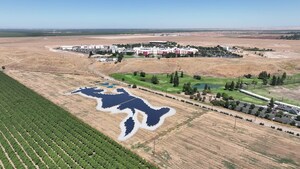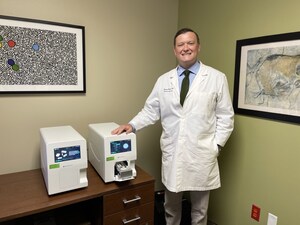MADERA, Calif., May 29, 2024 /PRNewswire/ -- Valley Children's Hospital has become the first hospital in California, and only the second children's hospital in the nation, to be awarded the prestigious Sustainable Healthcare Certification by The Joint Commission, an independent non-profit accreditation organization. This landmark achievement recognizes Valley Children's commitment to reducing its carbon footprint, combating climate change and actively pursuing crucial conservation and preservation initiatives.
"Our mission goes beyond providing exceptional healthcare for the children of our community to nurturing a healthier, more sustainable future for those children, their families and everyone in the communities we serve," said Todd Suntrapak, Valley Children's Healthcare President and CEO. "The Sustainable Healthcare Certification is more than an accolade. It is evidence of our unwavering commitment to doing what's right. Every step we take towards sustainability is a step towards ensuring the well-being of those we are privileged to serve. This is our responsibility, and at the end of the day, it's the heart of our work."
Later this year, Valley Children's will break ground on its renewable energy microgrid. When online and operational in 2025, the renewable energy microgrid will reduce reliance on the traditional power grid, ensuring Valley Children's Hospital and buildings on its campus remain operational in the event of power outages in the region. It will also cut carbon emissions by more than 50%. At the project's completion, Valley Children's will operate the largest renewable energy microgrid in the country that is connected to a hospital emergency system.
"Valley Children's is showing that it's possible to deliver the best care while also prioritizing the health of our environment, which is linked to the health of our children," Suntrapak said. "We hope our efforts will inspire sustainability initiatives within the healthcare community and across other industries in the future."
Valley Children's, one of the first hospitals to sign the White House-HHS Health Sector Climate Pledge, has also committed to achieving net zero emissions by the year 2050, meaning the entire campus will produce no carbon emissions, eliminating its carbon footprint and any negative impact on air quality.
Learn more about The Joint Commission's Sustainable Healthcare Certification here.
About Valley Children's Healthcare
Valley Children's Healthcare provides Central California's only high-quality, comprehensive care exclusively for children, from before birth to young adulthood. Our network offers highly specialized medical and surgical services to care for children with conditions ranging from common to the highly complex at its 358-bed stand-alone children's hospital that includes 28 NICU beds at partner hospitals. In addition, the Valley Children's Healthcare network includes specialty care centers, pediatric primary care practices and women's health services.
Our family-centered, pediatric services extend from a leading pediatric cancer and blood diseases center on the West Coast, and a pediatric heart center known for its expertise and pioneering treatments, to an 88-bed Regional Level IV neonatal intensive care unit (NICU), the highest-level referral center between Los Angeles and the Bay Area.
Valley Children's was the first children's hospital west of the Rockies to receive Magnet Nursing designation, the highest nursing benchmark in the world. In 2023, U.S. News and World Report again named Valley Children's one of the best children's hospitals in the country in seven pediatric specialties. With more than 670 physicians and 3,500 staff, Valley Children's delivers high-quality, comprehensive care to more than 1.3 million children from Kern County to the state capital and from the Central Coast to the Sierra. For more information, please visit www.valleychildrens.org
SOURCE Valley Children's Healthcare

WANT YOUR COMPANY'S NEWS FEATURED ON PRNEWSWIRE.COM?
Newsrooms &
Influencers
Digital Media
Outlets
Journalists
Opted In






Share this article